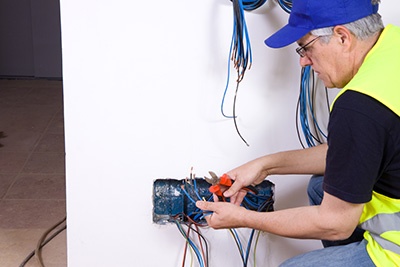 It is one of life’s ironies that the equipment used to establish ultra-fast communication links, the telecommunications fixed network, has lived up to its name and remained fixed for several decades. The traditional metallic conductor-based ‘tree and branch’ architecture forms the basis of most telcos main networks. It has gradually evolved and provided more capacity, from basic 64 kbit/s telephony through dial-up ‘broadband’ to genuine broadband via wholly copper links (ADSL and ADSL2).
It is one of life’s ironies that the equipment used to establish ultra-fast communication links, the telecommunications fixed network, has lived up to its name and remained fixed for several decades. The traditional metallic conductor-based ‘tree and branch’ architecture forms the basis of most telcos main networks. It has gradually evolved and provided more capacity, from basic 64 kbit/s telephony through dial-up ‘broadband’ to genuine broadband via wholly copper links (ADSL and ADSL2).
These systems nearly always use copper conductor cables that have remained largely unchanged for over 30 years. VDSL (also known as Fiber to the Cabinet) however started a change that used optical fiber to a deep cabinet (i.e. one near a customer group) to step up capacity, from the approximately 20 Mb/s ADSL limit to a figure nearer 100 Mb/s.
The need for greater bandwidth
However, several factors are converging to make higher capacity a near term requirement. These include:
- The volume of video content on the Internet, which is increasing rapidly, as are the audiences watching it
- The transmission demands of video, which are rapidly evolving from ’mere’ HD to bandwidth-hungry 4K and 8K technologies
- The use of file sharing, gaming and homeworking which have further increased capacity needs
- The Internet of Things phenomenon is at last gathering pace - smart monitoring and metering, Internet-enabled devices and especially, the health needs of ageing populations, are now prime concerns for planners and politicians alike.
Can copper cope?
 So, the copper bearer network, even if VDSL-based, is facing a watershed moment. The economic benefits of creating gigabit communities is well understood, but how can this be achieved?
So, the copper bearer network, even if VDSL-based, is facing a watershed moment. The economic benefits of creating gigabit communities is well understood, but how can this be achieved?
The obvious way to achieve this has always been via point to point (P2P) fiber networks, frequently using switched Ethernet equipment. This has suited new local operators reasonably well since, if building from nothing in a relatively small area, the cost of an all-fiber network can be justified. However, for national telecommunications operators it poses a real challenge. Many large carriers have invested in GPON or GEPON to deliver sub 1 Gb/s services or VDSL to deliver a 100 Mb/s service.
To uprate a GPON or GEPON system to deliver 1 Gb/s per customer service requires uprating the PON to NG-PON (shared 10 Gb/s downstream and shared 2.5 Gb/s upstream). However, this still does not provide a true customer experience of 1 Gb/s; for this to occur NG-PON2 is required and this is still not fully ready.
G.fast and delivering gigabit speeds
This has opened a window to copper equipment providers. Standards bodies have therefore been working to produce recommendations for copper drop, fiber-fed systems - known popularly as G.fast - with the first formal recommendation, G.9700, published in April 2014. It enables future deployments of ‘gigabit’ links. The systems will operate from fiber-fed nodes using copper drops of up to 250m. The speeds offered range from 1 Gb/s for the very shortest/best condition copper drops, up to 150 Mb/s for drops at the upper end of the distance range. Major vendors, such as Alcatel Lucent and Huawei, are rapidly developing products.
But, as with NG-PON2 (which uses several wavelengths on one fiber (WDM)), the technical challenges facing G.fast are profound. They include:
- Requirement for shielding: Alcatel-Lucent has published downstream speeds of > 1 Gb/s at 70m drop length, but it seems this requires the use of shielded copper drops. Speeds drop below 1 Gb/s at any appreciable distance when using older – but more prevalent – unshielded twisted (copper) pairs (UTP). If the existing network uses aluminum anywhere within it, this can also cause transmission problems.
- Connector issues: In real life it is unlikely to be the cables alone that determine performance. UTP cables were frequently jointed by inexpensive connectors that, with time, have tended to allow the ingress of moisture into the network, affecting performance.
- Cross talk: The performance of G.fast depends on limiting cross talk within the cable, a property that is easily worsened by the cable’s condition. Commercial G.fast systems will employ compensation systems and it’s hoped these will correct for such issues.
- Radio interference: A further off-setting technique is required to suppress interference with FM radio channels which cover the 87.5 to 108 MHz frequency spectrum since G.fast uses 106 MHz signal (although this will be replaced later by a higher frequency signal).
Making the choice between G.fast and NG-PON2
The first G.fast roll outs are likely to appear in a similar timeframe to NG-PON2 deployments (late 2015 to 2016). It means operators will have more choice. For densely populated cities where new build is undesirable, G.fast may offer at least a short term solution. In other areas, where there is some (but insufficient) fiber, NG-PON2 may offer an alternative. Greenfield build is likely, as now, to favor high capacity P2P systems.
When making a choice, operators need to look beyond the specifications and even the equipment on offer. Questions include:
- What is the state of the legacy copper network?
- Is it up to the task?
- What are the operating costs (OPEX) for the current network? A well-maintained copper system may generate minimal OPEX, but an ageing, far-flung and minimally maintained copper network can give rise to enormous OPEX costs. Indeed, some suggest that an all-fiber network can save between 20%-60% of OPEX, depending on the existing infrastructure.
In summary, the need for higher speed, gigabit networks means the old ‘tree and branch’ copper-only network must change. Whether that is to a pure fiber, P2P or NG-PON system, or to a copper drop, deep-fiber cabinet network, will depend critically on each operator’s assessment of all the factors outlined above.


